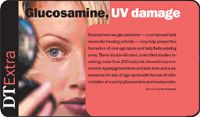- Case-Based Roundtable
- General Dermatology
- Eczema
- Chronic Hand Eczema
- Alopecia
- Aesthetics
- Vitiligo
- COVID-19
- Actinic Keratosis
- Precision Medicine and Biologics
- Rare Disease
- Wound Care
- Rosacea
- Psoriasis
- Psoriatic Arthritis
- Atopic Dermatitis
- Melasma
- NP and PA
- Skin Cancer
- Hidradenitis Suppurativa
- Drug Watch
- Pigmentary Disorders
- Acne
- Pediatric Dermatology
- Practice Management
- Prurigo Nodularis
- Buy-and-Bill
Article
Nonlinear optics option for evaluating photoaging
Physicians who wish to precisely quantify the photoaged skin of their patients to observe and measure applied treatment successes are at a loss; only traditional methods of quantification exist.

Physicians who wish to precisely quantify the photoaged skin of their patients to observe and measure applied treatment successes are at a loss; only traditional methods of quantification exist, like repeated biopsies, protein extraction and electrophoresis, as well as clinical evaluation by photography.
Evaluation methods
Sun-Jang Lin M.D., from the department of dermatology, at the National Taiwan University Hospital and College of Medicine, in Taipei, Taiwan, researched methods in quantifying photoaged skin, such as nonlinear optics including multiphoton excitation and second harmonic generation, and presented his thoughts and vision in how to precisely assess the extent of photoaging in the skin of patients, at the 2006 annual meeting of the Society of Investigative Dermatology, here.
Intrinsic skin aging
According to Dr. Lin, intrinsic skin aging is universal, occurs with age and can be seen as a dryness, wrinkling and laxity of the skin.
Photoaged skin is due to cumulative sun light damage (UV), and is seen in the irregular pigmentations, wrinkling and inelasticity in the skin.
Solar elastosis, seen histologically as tangled masses of elastic fibers in the upper dermis, as well as decreased collagen content due to increased metalloproteinase activity and cytokine release, are just some of the features of dermal photoaging.
In cosmetic medicine today, there are many treatments employed to achieve skin rejuvenation, including topical retinoids, laser resurfacing, chemical peeling, as well as light sources such as intense pulsed light and LEDs, all aimed at remodeling the dermal structures.
"To measure skin aging, physicians can perform conventional biopsies, but these are invasive with a real danger of scarring; it is a destructive process for an examination and is not a 'real-time' examination," Dr. Lin tells Dermatology Times. "An optical biopsy, on the other hand, is noninvasive. Removal of tissue is not needed - it is a nondestructive procedure and is a 'real-time' observation," Dr. Lin explains.
Dr. Lin says the optical biopsy techniques available to date are:
Dr. Lin says, "A nonlinear optical microscopy can be achieved employing either multiphoton fluorescence imaging or second harmonic generation (SHG) imaging. Multiphoton fluorescence imaging uses a femtosecond IR laser for excitation. It has a point-like nonlinear fluorescence excitation, a deeper penetration for 3-D imaging and has an easy accessibility to the emission spectrum. Noncentrosymmetric biological structures are effective in generating SHG and yield light exactly half of the wavelength of the incident light. Biological second harmonic generators include collagen, muscle fibers and microtubules."
Clinical application
To demonstrate the ability of these nonlinear optical methods in characterizing and quantifying the changes of dermal properties associated with photoaging and to evaluate the possibility of clinical application of MPF/SHG microscopy in photoaged skin, Dr. Lin obtained three skin specimens from three patients ages 20, 40 and 70 years respectively.
Large area imaging was performed for each specimen. Skin specimens were further processed for histological examination using H&E and elastic stain.





